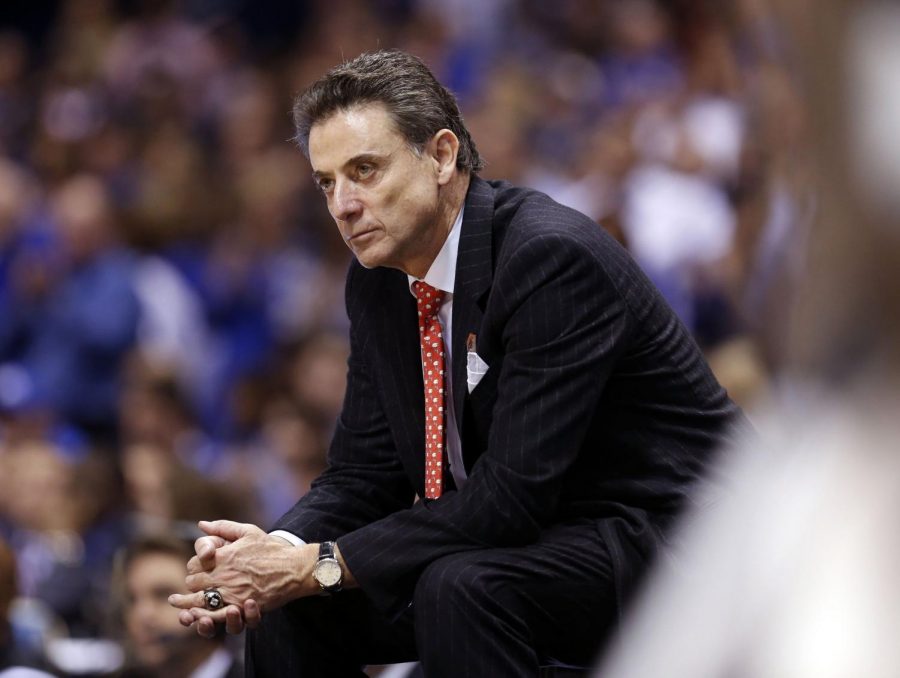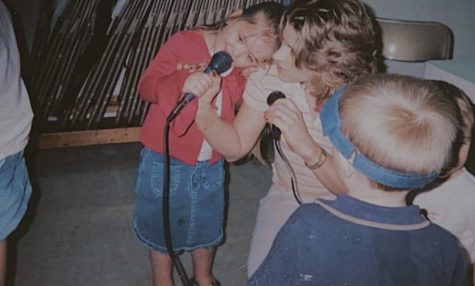Enough is Enough, Pay These Kids
In lieu of the recent explosion of college sports scandals thanks to the FBI, it’s time to eliminate all problems by implementing one simple solution
Rick Pitino, former University of Louisville head men’s basketball coach, was fired prior to the 2017-2018 season amid another alleged recruiting scandal. Photo courtesy of Charles Bertram, used under Tribune News Service license.
In the heart of March Madness, we tend to push controversial topics to the back of our minds. Even in this scandal-driven year, we’ve simply pushed the issues to the back burner, at least until the holiday (basketball) season is over. Well, it’s almost over, and the issues will remain.
According to CBS News, March Madness raked in over 900 million in 2015, with big-media companies signing a 10.8 billion dollar, 14-year extension in 2006. The money will only grow as we wrap up the decade, which means unless something is done, kids will continue to be shorted what should at least partially be theirs.
Why Not?
The common argument against paying college athletes is their scholarship money and the use of top-tier athletic and medical supplies. In “There’s No Crying in College: The Case Against Paying College Athletes,” from Bleacher Report, Zach Dirlam argues their commodities more than make up for their lack of pay.
“College athletes are already being paid with an athletic scholarship that is worth between $20-$50,000 per year. Oh, and that does not even begin to factor in the medical and travel expenses, free gear, top-notch coaching, unlimited use of elite athletic facilities and a national stage to audition for a job in the professional ranks. All of those perks are paid for in full by the universities these athletes choose to attend,” Dirlam said.
While the argument makes enough sense to give attention, naysayers are missing the point. It’s understandable to look at an average college student compared to a Division I student-athlete and point out ways in which the athlete is benefited unfairly compared to average students.
However, an average student doesn’t make the university millions of dollars, or even close. Average college students get what they pay for — a meal plan, a dorm if they choose, books, etc. A top-tier DI athlete receives enormous benefits from a university, in exchange for his services and decision to attend that school.
In reality, this is the least the athlete can do — accept this proportionately small offer from the university in exchange for filling their pockets fat. Sadly, this is their only option.
Breaking it Down
Ramogi Huma, a contributor at U.S. News Online and founder of the National Collegiate Players Association, argues the bogusness of the arguments presented by the NCAA in his article “A Fair Day’s Pay for a Fair Day’s Work.”
He says they argue free education for the services of players, yet less than half of revenue-producing athletes don’t graduate, and risk losing their scholarship if they get injured. He said college athletes, particularly top revenue-producing ones, spend over 40 hours a week on their sport alone, and generate billions a year.
“A joint study between the National College Players Association and Drexel University shows that the NCAA will strip football and men’s basketball players of $6 billion of their fair market value between 2011-2015,” Huma said. “In contrast, the NCAA admits that its scholarship limit leaves ‘full’ scholarship athletes with $3,000 to $5,000 in out-of-pocket-expenses each year.
Meanwhile, recent television deals pay the NCAA and its colleges over $1 billion per year in brand new revenue.”
Huma said although most would expect that revenue would be used for a colleges educational mission, history has shown it’s largely used for expandments and flashy arenas in order to generate more revenue. In short, Huma says college athletes should be paid a fair wage for fair work, like all other Americans.
The Right Solution
So, where do we start? This is not a quick fix, there are limitations and questions and a million formalities to figure out. How do we determine which athletes get paid? How do we determine which sports deserve payment consideration, and which do not?
Joe Nocera, sports business columnist for The New York Times, offers the idea of a salary cap based on the money brought into the program. In his article “A Way to Start Paying College Athletes,” Nocera describes how he would fix the lack of compensation.
“Every Division I men’s basketball and football team would have a salary cap, just as the pros do — except the amounts would be vastly lower. In basketball, the cap would be $650,000. In football, it would be $3 million,” Norcera said. “It is ludicrous to argue that the Power 5 programs cannot afford this; the combined $3.65 million is barely half the $7 million that Michigan Coach Jim Harbaugh made this season.”
Obviously, not all athletes would be making this number. A small percentage of the best players will make bigger numbers based on their pre-college career and performance. That doesn’t mean the rest of the players would be left out.
“Second, I would impose a minimum salary: $25,000 per player in each sport,” Nocera said. “This would obviously not make the athletes rich, but it would give them enough to live like typical college students.”
The only reason this sounds alarming on sight is because people have been conditioned to believe money in college athletes is equal to a compromise of integrity. In fact, these rules are set in corporate greed in universities, whose hands point at a poor kid accepting money and say, “this is wrong, this is a scandal”, while they make millions and pay coaches millions.
It’s time to pay these kids what they deserve. Whether it’s a salary cap or another solution, paying players will help fix the current corruption in college sports, and allow the FBI to focus back on the aliens.








